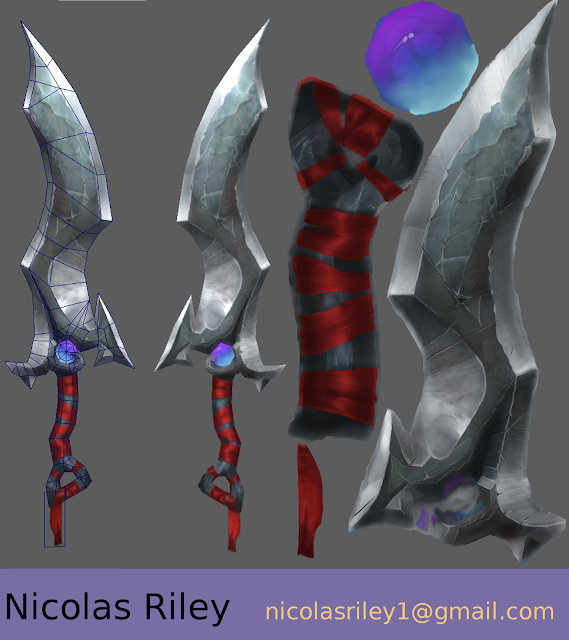This video will start at the main menu and we'll make our way through all the floors in the house as I provide some commentary on the game and what's going on with the small team behind it as well as myself.
Accompanying video here:
I'll take a second to talk about the awkward controls. It uses the classic tank controls, but with the camera of a first person system, the camera actually pivots around like your face would, this is to help make a more immersive experience and what I think will be a nice twist on the classic Resident Evil style without just making it an "FPS". As I walk into the house, I want to clarify that this is a stripped down look at the house, you won't see any furniture or items besides the candles, which you'll notice aren't very good at lighting up the dark house. You can see that the floor, ceiling, and walls have a texture, but nothing else will, and what is there is just a placeholder, once the programming gets farther along I'll be going back to . Now then, this small demo of Moondog takes place in a medieval time somewhere in Europe, this demo will put you in the shoes of a Moondog here to explore the house, find a treasured stone, and return to your employer. The stone is an ancient relic, but you'll learn more about that at a later time. In this world, a Moondog is a member of an underground society that steal from people of fame or interest. This house belongs to a lord who has shut himself up in the woods away from town, but rumors say he's actually guarding something and the moondogs quickly took action to find out what it was. One of your members already set out to find it, but without hearing back from him, the society sent you in to investigate his dissapearance as well as finish what he started.
More on controls: This game is using a tank control scheme for your body, but you can look around and almost behind you thanks to the camera pivoting like your head would. It might look a bit clunky right now with the slow turning and slow walking pace but we're working on revamping the controls, movement, and getting the main character in, who I'll be able to reveal in a future update. This game will focus on exploring the house and
getting immersed in the atmosphere, but of course there will be puzzles, item hunting, and a little bit of combat to break it up. The main demo will use this layout for the house and the main goal will be getting into all the locked doors, once you do that, you'll have to wait for the full game to see what the last door was hiding. As we go up I'll start talking about the timeline of the game.
This game is my attempt at creating a new way of thinking about an FPS game inspired by the VR headsets I worked with. This project is piggy backing off a previous project that was an attempt at coding a game in a month from scratch. Obviously that didn't work out too well but it's come a long way and kept inspiration from it. This demo is planning to be released around October of this year as a prequel to another project and as such is much grander in scope and will have more time put in as compared to the previous which was going to be something more of an arcade style zombie shooter. I want to emphasize the idea of this being a crash course in the control scheme, with weapons being more melee oriented and animation based rather than working with something that requires precise aim when players might not be comfortable with the controls yet. Things are fairly slow in this, and won't pick up to anything too intense until part 2 is started, where it can afford to be more action packed. We're reaching the end of our tour so I'd like to take some time to say that this first part is going to be free when it's released, and probably won't take long to complete. Part 2 is going to dabble in some different themes, have more enemy types, more puzzles, and will expand upon the story that encompasses the world these games take place in; that game will be for sale to help support the people helping me as well as myself so we can keep working on things like this, there's no price planned yet.
I'm not a fan of making any solid dates as things happen, problems come up, and a small team can easily hit a wall in terms of development, but I will be pushing for October from a small team as a lead and try to make some more videos showing major milestones like this. This will be my first game in what I hope can broaden out to a small series of related games, so I want to thank you first for making it this far, and for showing interest. Look forward to the release of moon dog, and more videos later on, see ya.








